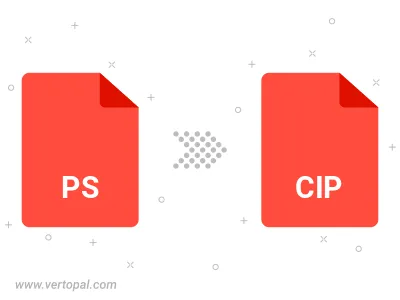Convert PS to CIP
Convert PS images to CIP format, edit and optimize images online and free.

The PostScript (PS) file extension stands for "PostScript", a dynamic page description language developed by Adobe in the early 1980s. Primarily used for desktop publishing, vector graphics, and printing tasks, PS files are particularly beneficial in ensuring high-quality output across various devices. As a precursor to PDFs, they encode textual and graphical content with great precision, facilitating consistent rendering on any platform. Renowned for their robust and flexible nature, PostScript files have played a pivotal role in digital typography and printing, underpinning many modern typesetting applications and output systems.
A CIP (Cisco IP-Phone Image Bitmap) file is a proprietary format used to store images and graphics for Cisco IP phones. It allows customization of phone interfaces with logos, branding, and themes. Created with Cisco Phone Designer software, CIP files can be installed via Cisco Phone Administrator software or USB drives. While primarily for Cisco IP phones, they can also store subtitles and other data.
Drag & drop or browse your device to select and upload your PS file.
Pick any PS to CIP tools if you need to edit your PS file, then click the Convert button.
After the convert is complete, click on the Download button to get your CIP image.

To change PS format to CIP, upload your PS file to proceed to the preview page. Use any available tools if you want to edit and manipulate your PS file. Click on the convert button and wait for the convert to complete. Download the converted CIP file afterward.
Follow steps below if you have installed Vertopal CLI on your macOS system.
cd to PS file location or include path to your input file.Follow steps below if you have installed Vertopal CLI on your Windows system.
cd to PS file location or include path to your input file.Follow steps below if you have installed Vertopal CLI on your Linux system.
cd to PS file location or include path to your input file.